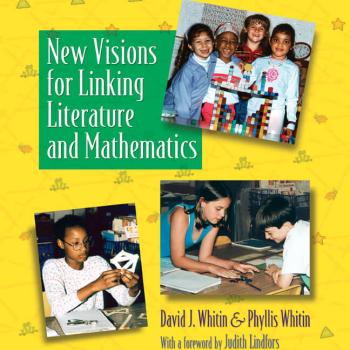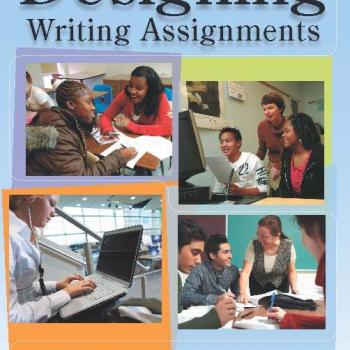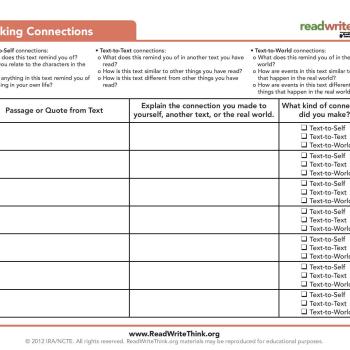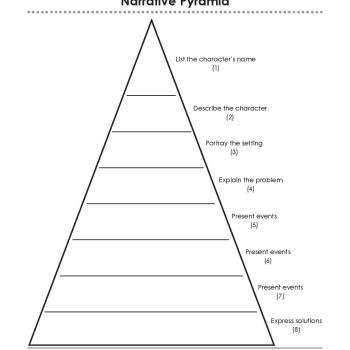David and Phyllis Whitin offer K–6 teachers a wealth of ideas for integrating literature and mathematics.

New Visions for Linking Literature and Mathematics

Grades
|
Teaching Poetry in High School
9 - 12
Professional Library
| Book
Albert Somers offers teachers a vast compendium of resources for teaching poetry in a highly accessible format.

Grades
|
Raymond Carver in the Classroom: "A Small, Good Thing"
9 - 12
Professional Library
| Book
Rubenstein offers specific, classroom-tested strategies for teaching Raymond Carver's short stories and poems in the high school English classroom.

Grades
|
Go Public!: Encouraging Student Writers to Publish
6 - 12
Professional Library
| Book
Intended for middle and high school teachers, Go Public! offers specific writing ideas and classroom activities to help students develop the confidence and ability to publish in a wide market.

Grades
|
Wordplaygrounds: Reading, Writing, and Performing Poetry in the English Classroom
7 - 12
Professional Library
| Book
O'Connor offers new approaches to teaching poetry in middle and high school with more than 25 writing activities that can constitute an entire course or work as individual lessons.

Grades
|
Genre Theory: Teaching, Writing, and Being
9 - 12
Professional Library
| Book
Dean synthesizes theory and research about genres and provides secondary-level teachers with practical classroom applications.

Grades
|
Designing Writing Assignments
9 - 12
Professional Library
| Book
Traci Gardner offers practical tips, starting points, and a companion website to help secondary and college teachers design effective writing assignments.

Grades
|
Preventing Plagiarism: Tips and Techniques
9 - 12
Professional Library
| Book
DeSena offers a practical guide on how high school and college teachers can structure assignments and guide students so that students don't plagiarize.

Grades
|
Talking in Class: Using Discussion to Enhance Teaching and Learning
9 - 12
Professional Library
| Book
The authors guide high school teachers in developing skills in promoting and facilitating authentic discussion in the English language arts classroom.

Grades
|
Getting the Knack: 20 Poetry Writing Exercises
6 - 12
Professional Library
| Book
Dunning and Stafford, both widely known poets and educators, offer this delightful manual of exercises for beginning poets.

Grades
|
Lesson Plans for Creating Media-Rich Classrooms
7 - 12
Professional Library
| Book
This volume offers a collection of media literacy lessons for the secondary English classroom, including a CD of student handouts, teacher resources, and sample media files.

Grades
|
Standards for the English Language Arts
K - 12
Professional Library
| Book
Standards for the English Language Arts presents a vision of literacy education that encompasses the use of print, oral, and visual language and addresses six interrelated English language arts: reading, writing, speaking, listening, viewing, and visually representing.

Grades
|
Language Learners in the English Classroom
7 - 12
Professional Library
| Book
This book provides practical, research-based strategies that can help secondary-level English language learners meet the challenges of both language and content learning.

Grades
|
Reading in the Reel World: Teaching Documentaries and Other Nonfiction Texts
7 - 12
Professional Library
| Book
John Golden offers middle and high school teachers a practical guide for using documentary film in the classroom to improve students' reading, writing, and thinking skills.

Grades
|
Group and Self-Evaluation
6 - 12
Printout
| Assessment Tool
Students use this printout to evaluate both their own performance in a group as well as the actions of their group members.

Grades
|
Making Connections
3 - 8
Printout
| Graphic Organizer
Using this printout, students make personal associations to a text by finding and describing text-to-text, text-to-self, and text-to-world connections.

Grades
|
Narrative Pyramid
3 - 8
Printout
| Graphic Organizer
After students read a short story or chapter of a novel, they can use the Narrative Pyramid to reflect on key ideas and details.

Grades
|
Nonfiction Pyramid
3 - 8
Printout
| Graphic Organizer
After students read an article or other work of nonfiction, they can use the Nonfiction Pyramid to reflect on key ideas and details in the text.

Grades
|
Common Content Area Roots and Affixes
5 - 12
Printout
| Informational Sheet
This printout offers 50 or so common roots, prefixes, and affixes that give students access to hundreds of key concepts across the content areas.

Grades
|
Connection Stems
3 - 8
Printout
| Graphic Organizer
Connection Stems give students the language (and a reminder) to support their understanding by tying new learning to what they know about themselves and their world.